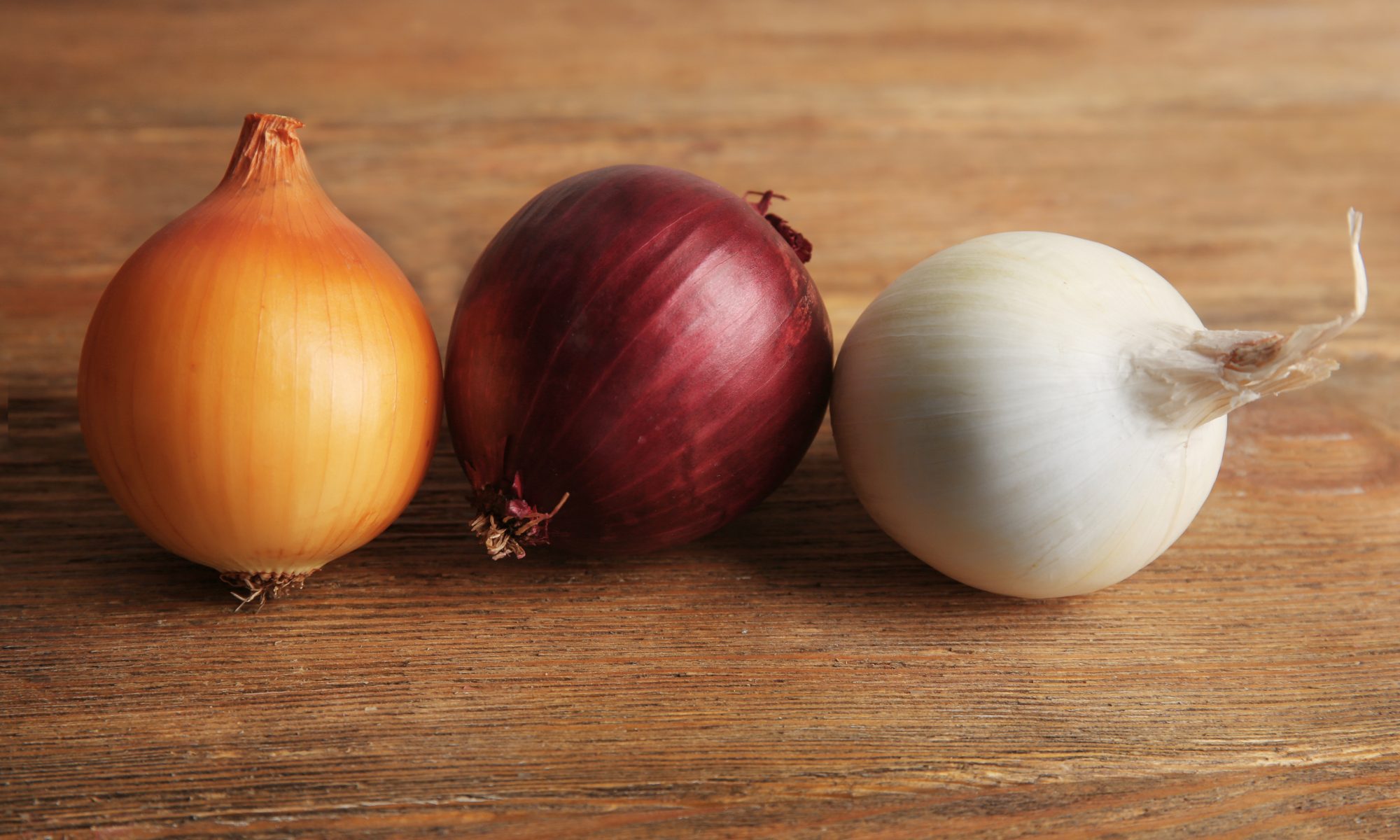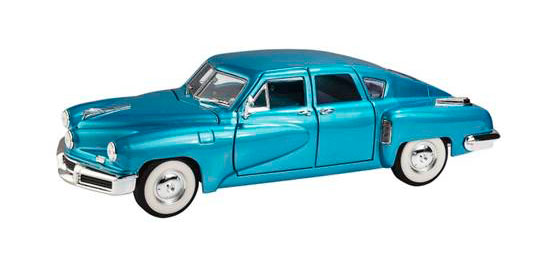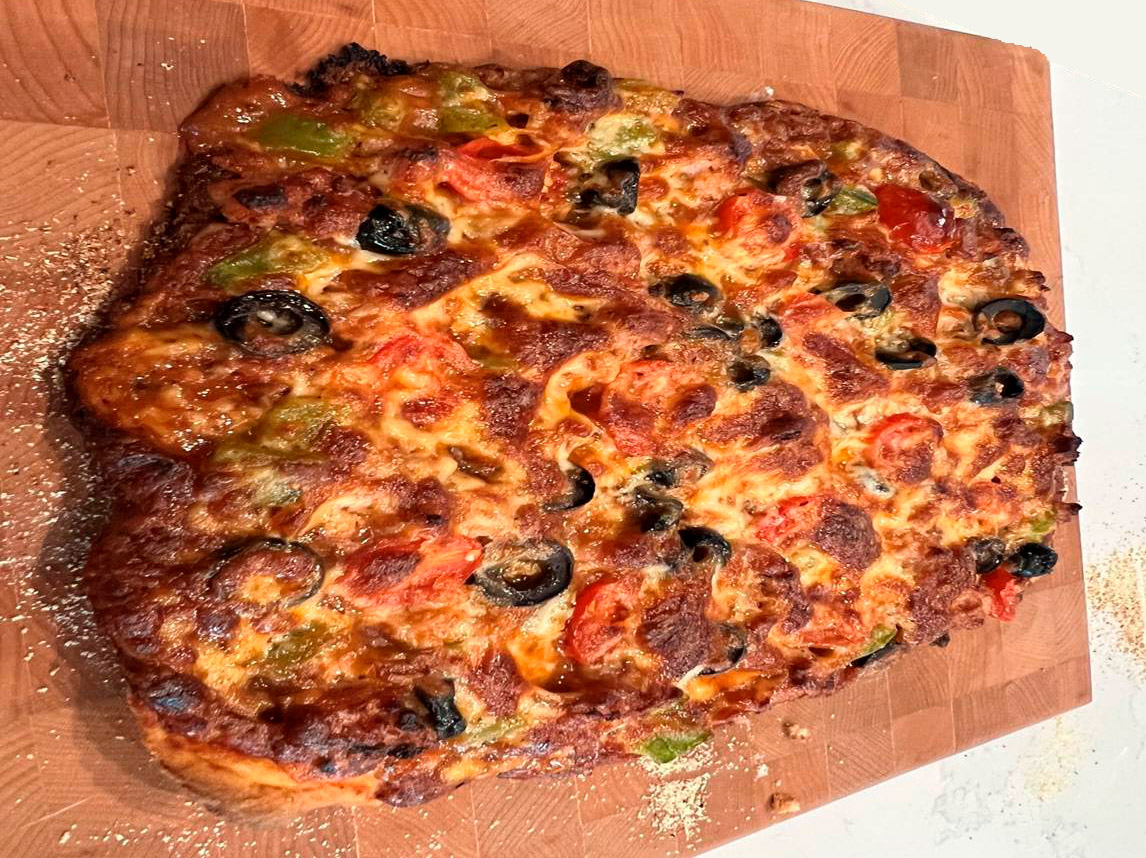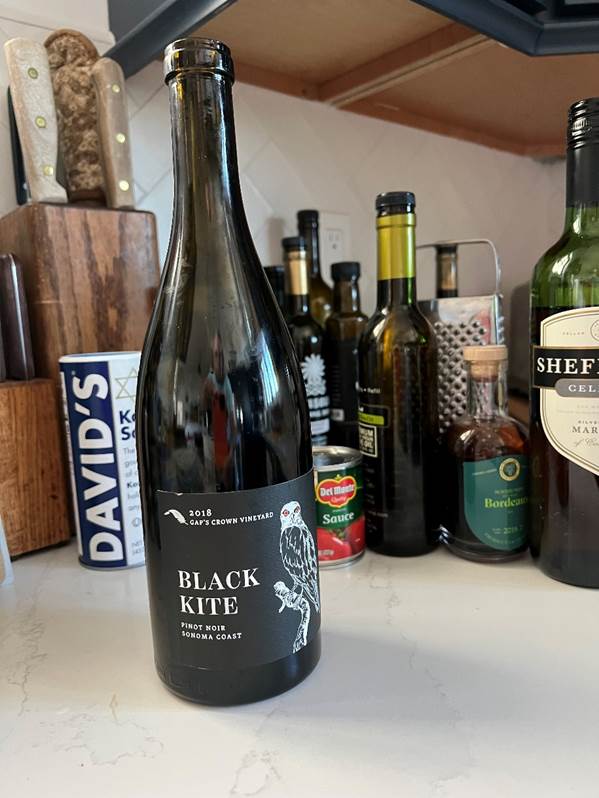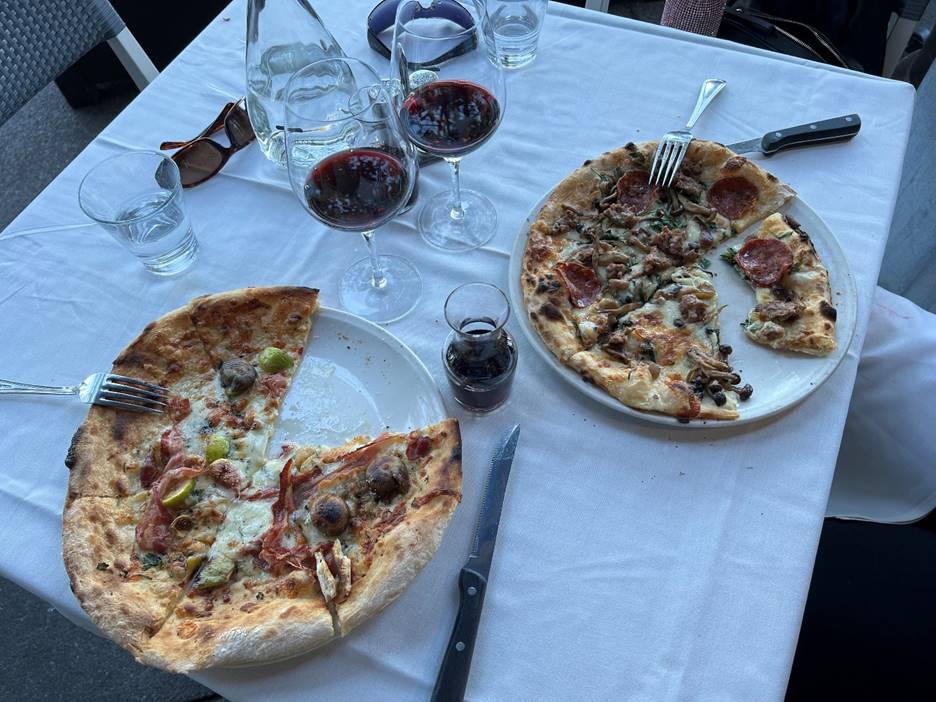Intro: In June of 2001 I was supposed to go on a golf trip to Arizona but injured one of my hands and I could not grip a club. The woman I was living with at the time had been to France and wanted to return to the country. I had not been as an adult. Coincidentally, American Airlines had just started promoting a new route, from San Jose, CA to Charles de Gaulle Airport in Paris, for the incredibly affordable rate of $220 each way. Since children under 2 could fly free, I bought a RT ticket for $440 plus taxes and used miles to get my gal’s seat. The three of us flew to Europe for under $500!
This was about the time my passion for food was really getting serious.
We only had a week for this trip, and since my father’s first visit to France involved D-Day, I had to see Normandy. Ironically, we ended up there on the anniversary of D-Day, 57 years later (June 6, 1944).
I found a hotel in Paris and my lady found us a wonderful Chateau hotel with 14 guest rooms just outside of a little town near the Normandy beaches. I wrote this piece shortly after getting home. GM
There are No Freds in France
Vincent had a serious and officious look about him, from the perfectly fitted suit, clipped manner of speaking and brisk pace to his walk, to the small spectacles on his face and hawkish nose.
He was the consummate professional in France for his industry, and since the French Republic is still the epicenter of food and dining, we were not altogether surprised by his seriousness.
Watching Vincent work and experiencing his expert service made me think of the restaurant service in America. Even in formal restaurants, I thought, the service staffs treat everything a bit more casually than its peer group in France.
We were guests at a comfortable chateau near a long stretch of beach in Normandy made famous by World War II, and we took our main meals in the hotel restaurant each evening. We marveled at the length of the days and did not have dinner until it was nearly dark, or close to 10 o’clock.
As hotel guests, we naturally had the sense that during our stay, the chateau was in part ours. But when we dined in the chateau’s restaurant, Vincent left little doubt about whose place it really was — it was Vincent’s.
I shaped my opinion of Vincent’s professionalism after a couple of days at the chateau. My first impression of him and the chateau’s version of French dining are considerably different. After being seated, we waited a long time for anyone to acknowledge our presence. More important than acknowledgement, we were extremely thirsty, and also a little anxious to enjoy some wine.
The day had been long, with more stress on the front end than we had bargained for. The rental car company had delivered our car on schedule to our hotel in the 8th Arrondessement in Paris, but forgot the child seat for our eleven-month-old daughter. The fellow at the reception desk called the rental car company for us, and we were told there are no child seats available, but perhaps one would become available on Tuesday. We had no intention of driving in France without a child seat for our child. It was Sunday. Monday was a French national holiday and we were going home on Thursday. Waiting two days for a child’s seat was not an option.
Luckily, the day before we had visited with friends from the Bay Area, who are living across from the Luxembourg Gardens on the Left Bank. They have kids. They have car seats and they were home that Sunday morning. They loaned us one.
The drive out of the city was a little tense, but once on the toll roads heading north from Paris, the time passed easily.
We arrived late in the afternoon, checked in, dropped our bags and headed straight away for Omaha Beach, to see where my father and another 150,000 men had landed almost 57 years earlier.
It was a warm, sunny afternoon. So pleasant, in fact, that it seemed impossible to think of what happened here years ago. We drove around the frontage road at Omaha Beach, which is one of the longest beaches we had ever seen. We looked at memorials. We walked to the water’s edge and looked across the English Channel, trying to imagine the huge armada that appeared off this shore on June 6, 1944. I took an empty film canister and filled it with sand to bring to my father, who will turn 80 later this year. We went back to the chateau, thirsty and hungry.
Hotel guests occupied maybe six tables in the dining room. Most of them were also American. Two men and two women were busy doing various functions associated with the dinner service. We watched them bring bread, water, wine, salads, main dishes, desserts and a cart full of cheese to the other guests. We made small talk. My baby girl was asleep in her stroller. Minutes passed. We made more small talk. After a while, our chatter fell away like a 20-pound rock dropping into an abyss. I wondered if the rock would gain speed as it dropped, or actually de-accelerate, lifted by some magical updraft within the walls of the imaginary abyss.
About the time I ran out of patience, Vincent appeared and nodded as I asked thirstily for water. Someone else brought it and the wine followed shortly thereafter. We had been saved.
About an hour earlier I had been looking for something for Margo to eat when I spied the dinner menu in the hotel lobby and scanned it for rack of lamb. Normandy has a reputation for producing some of the best lamb anywhere, allegedly because of the salt air’s influence, the soil and the feed grass this combination yields. So what if the area is also famous for its Dover sole, scallops, crabs and miniature lobsters. I wanted lamb, and there it was on the menu.
There was another item on the menu that caught my eye, sounded delectable and seemed perfect as a starter. Unfortunately, this would be a problem for our waiter, who three days later would tell us his name is Vincent.
“For starters,” I said, “I would like the warm apple stuffed with Camembert cheese and served with baby green lettuce. Then I’ll have the rack of lamb.”
The headwaiter’s response stunned me.
“No,” he said. In French, the enunciation of this common word makes it sound more like a powerful denial than a simple rejection — “Nnnnoo,” said Vincent.
After a moment of silence, and while I did a few mental calisthenics to sort out what I might say next, Vincent continued.
“Zhey cheese is not served before dinner. It is for after dinner.”
Tell this to someone born in Wisconsin (like me), I thought, but instead just said “okay” and ordered Scottish salmon, hoping this was an acceptable choice. When Vincent scribbled the entree into his notepad, the tacit approval gave me a sense of relief I had never before felt by merely ordering an appetizer. In America, ordering appetizers is only a function of dinner and not an emotional experience. I wondered, what could be wrong with a few crackers and slices of cheese before dinner?
If a moral battle was being waged between the restaurant’s headwaiter and me, it was clear he had won the first round.
I said to my woman and mother of our child: “What’s up with that? Here we are paying a modest premium for the short-term privilege of staying in a 19th Century manor house near the Normandy coast and we get a food server with attitude telling us when we could eat what.”
“It’s just a little faux pas, honey. They have their ways here,” she said. Normally her words are soothing and comforting but they did little to abate my frustration. The waiter had been condescending and made me feel like a hayseed.
In my head I reviewed the first 15 minutes in the chateau’s restaurant and thought, oh my god, I’m in for three hours of torture dressed up as a fine dining experience. It made me little homesick, and this was only our third day in France. We were seated promptly and then ignored forever. We nearly died of thirst, couldn’t get a cocktail for the love of money and then I was told I could not have a salad with a cheese-stuffed, baked apple.
In America, you are hustled to a dinner table so the owners “can turn” the table for higher revenues. Then, a smiling young blond or a non-English speaking person will rush to your table and forcibly deliver huge glasses of ice water, whether you want ice in it or not. Invariably, some of the water spills on the table, your lap, or somewhere, because there’s so much of the stuff and all the ice makes the glasses sweat. There’s an intensity to the activity in American restaurants, as great big platters of food are whisked past you to people who have probably not missed a meal in years but act as though it has been days. This staccato burst is followed by the sudden appearance of a harried young man in his early thirties, who probably wishes he could have had a better short game (in golf) so he could have made the pro tour, instead of waiting tables in this no nothing town. He whips out a pad and pen and practically boasts:
“Hi. My name is Fred and I’ll be your food server tonight.”
By comparison, there are no Freds in France. For a moment at the chateau, I wished for one before regaining my senses. It was a fine meal, even if it was not in the sequence of my choice.

